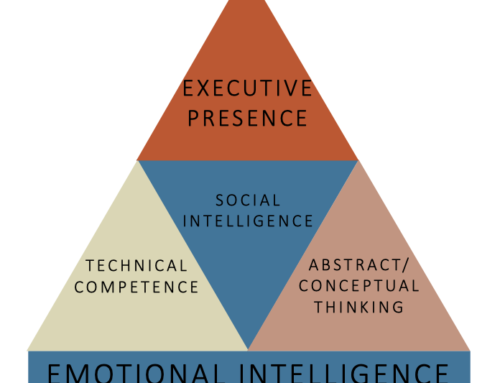 Note: This is the 2nd part of a 3-part series on Effective Communication in Conflict for Higher Education Leaders. If you missed the 1st part of the series on Emotional Intelligence, you can read it here.
Note: This is the 2nd part of a 3-part series on Effective Communication in Conflict for Higher Education Leaders. If you missed the 1st part of the series on Emotional Intelligence, you can read it here.
As an executive coach for higher education leaders, I’m often asked to coach executives and leadership staff on how to improve their ability to handle conflict and conduct critical conversations. I get asked about this subject so often that I developed and teach a course called Effective Communications: How to Approach Critical Conversations and Conflict Situations, which is designed for higher education leaders who face situations that are often unique to educational environments.
This post is the second in a three-part series on handling conflict and critical conversations in a higher education environment. Last time, I discussed the critical role your Emotional Intelligence plays in your success in conflict. Today, I’ll walk you through a four-step model that helps you approach critical conversations and conflict situations successfully.
The Four Steps to Approaching Handling Conflict and Critical Conversations as a Leader in Higher Education
There are 4 key steps in my model for approaching conflict and critical conversations. They are:
Each step requires different thinking strategies and behaviors from the higher education leader. Together, these four steps allow you to navigate difficult, often emotionally charged conflict situations with greater ease and skill.
STEP ONE: REFLECT
Reflection is the first step for handling conflict and critical conversations, andyou need to do this before you speak with anyone.
Reflection is the act of preparing yourself for what’s ahead and think through the outcomes that you want to achieve, the needs others may have, and mentally prepare yourself for the difficult conversation you anticipate.
Four questions to ask yourself at this stage include:
- What are my goals?
- What are his/her possible goals?
- How will Iget into the right frame of mind to have this conversation?
- What are other possible reflection points that I need to consider?

I recommend using a powerful tool called mind mapping to prepare for difficult situations. Mind mapping is an intuitive brainstorming framework that allows for generating ideas without regard to linear structure or order. Per the illustration, start with a concept and brainstorm a list of connected ideas.
STEP TWO: PLAN
In step one, you reflected on all the goals and conditions that you anticipate experiencing during the actual conversation. In step two, you create a plan for how you intend to handle the actual conversation where you address the conflict with the other party/parties involved.
This 4-step model can be applied to conversations with other higher education leaders, colleagues (administrative or faculty), students, or other individuals with whom you interact.
The four questions you ask yourself in this step are:
- What does success look like?
- What information do I need?
- How might we move toward partnership?
- What are the other options?
There may be only one outcome for success, or you may be open to multiple outcomes for success. You may not be able to anticipate all the information you need at this point, but you need to gather all the information you believe you’ll need and have a plan for acquiring that which you don’t have during the actual conversation.
The goal of every critical conversation is to move people closer together instead of farther apart. As a higher education leader, you want to build consensus and a collaborative team spirit, not cause chasms to widen.
Before the actual conversation, you need to consider what steps you would be willing to take to reach a more congenial relationship and what conditions you won’t accept. Think through all your options in the planning stage of the process.
STEP THREE ENGAGE
Step three is when you get to the heart of the matter in a live interaction. Your job here is to engage the person or people you’re conversing with, extending compassion, respect, and an open mind. As a higher education leader, you must balance the emotional temperature of the room, expressing yourself and your goals calmly, clearly, and decisively. Sometimes your most important job at this stage is to just listen.
You may begin the conversation with the phrase “I’d like to talk about ________ with you, but first I’d like to hear your perspective.”
Ask as many questions as it takes for you to get a clear picture of what’s going on.
STEP FOUR MOVE FORWARD
In step three, you figure out what’s really going on and what critical issues are on the table (which may be different than what you originally anticipated).
Step four focuses on how the parties involved will move forward together. The goal of this step is to formulate a clear, complete vision for what is to happen next.
The questions you need to answer in this step include:
- What are our agreed-upon, concrete steps going forward?
- How will we communicate going forward?
Finally, as a leader, you need to “debrief” this encounter once you’re alone.
Reflect on what happened, what went well, what didn’t, goals for the future, etc. It’s a good time to return to step one and go through the reflection process to prepare yourself for the future.
Facing Conflict Situations in Higher Education: Two Examples of the Four-Step Approach in Action
I’ve coached several executives in using this four-step model, and I know it is a valuable tool for the specific scenarios you face as a leader in higher education.
For example, one of the leaders I worked with was about to lead an academic department meeting where there was no buy-in for program changes. He was a relatively new leader and knew he was facing an up-hill battle. Using the four-step approach I’ve described here, he was able to prepare for his meeting more effectively, ascertain the real issues that had not yet surfaced, and create a spirit of collaboration in his meeting. In the end, he won significant support for his change initiatives.
Another example where this four-step approach proved invaluable was for a new VP at a prominent educational institution. She came to me for help because she was about to have a meeting with one of her new staff members, someone who’d applied for her VP role and was not hired. The new VP understood that their working relationship would be greatly impacted by how she approached their first meeting together. I walked her through the four-step model, and she was able to prepare for and conduct the meeting with ease and grace. The two work together beautifully today, thanks to the care that the VP took with anticipating and preparing for the critical conversation.
Final Thoughts for Higher Education Leaders Facing Conflict Situations
Your role as a leader in higher education requires you to be adept at handling conflict situations and critical conversations with finesse, empathy, and determination.
As was discussed in part one of this series, building your Emotional Intelligence is the first step to becoming more skilled in conflict.
Using the four-step approach to critical conversations that I’ve introduced today is the next step, and it is certain to help you be more successful in difficult encounters you face as a leader in higher education.
Navigating conflict successfully is a skill that will not only help you improve overall results on your team but will also give you a career advantage for years to come.
In my third and final installment of this series, I will walk you through a case study drawn from real-life conflict situations in a higher education environment where the 4-step model I introduced today is applied.
In the meantime, if you’d like to discuss this 4-step model with me directly, or inquire about my executive coaching services for higher education leaders, let’s get better acquainted. Contact me at dianna@sadlouskos.com.





